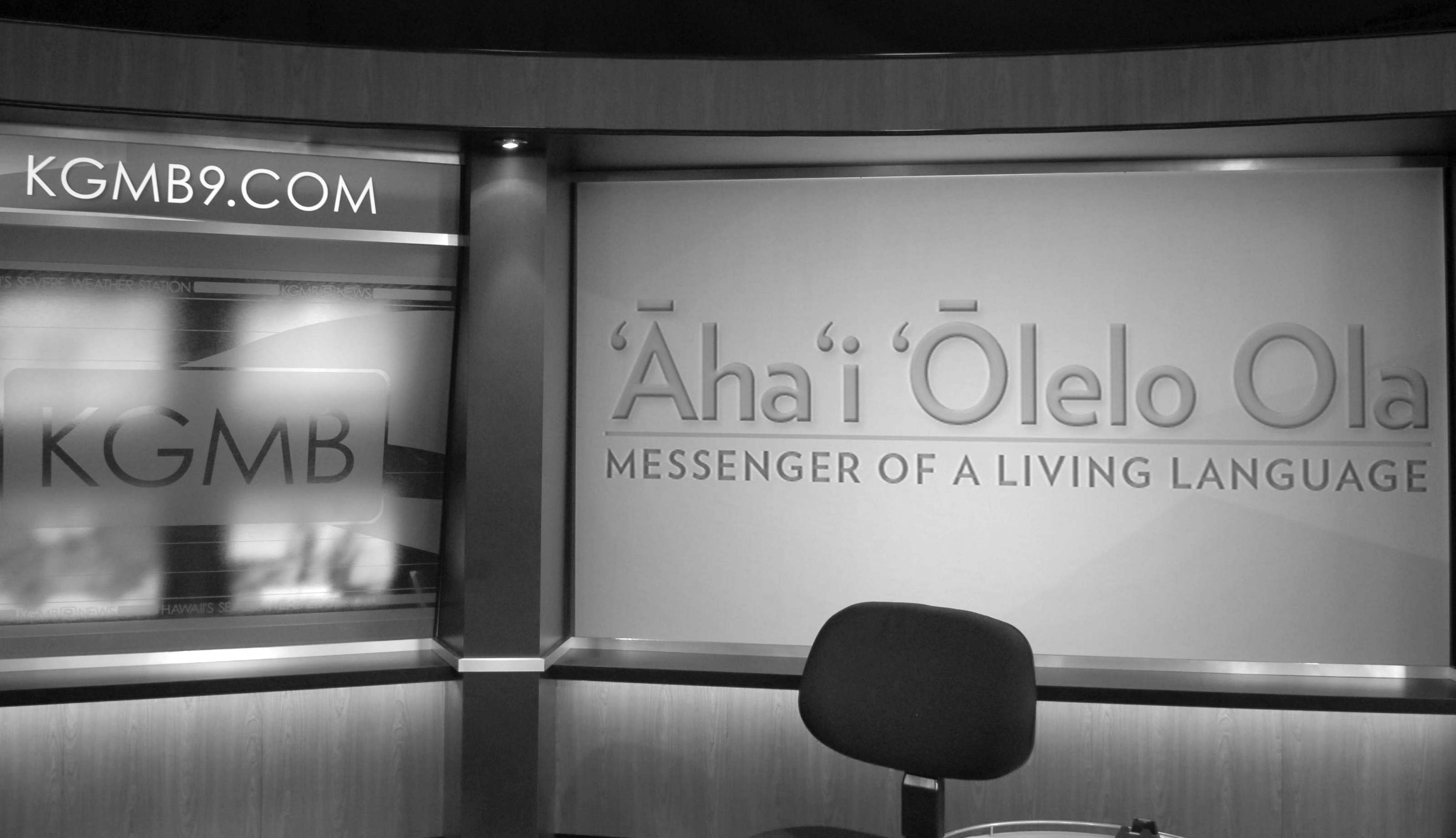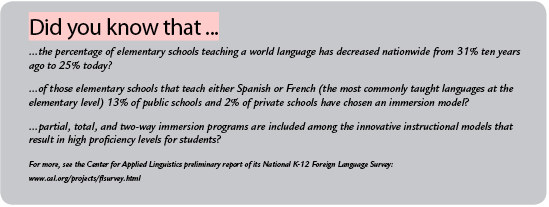‘Olelo Hawai‘i On The Airwaves!
The ACIE Newsletter, February 2009, Vol. 12, No. 2
By Amy Kalili, Luna Ho‘okele (Executive Director), ‘Aha Punana Leo, Inc., Hilo, HI
The Hawaiian language movement achieved another significant milestone on the morning of March 10, 2008. At about 7:30 am, the words “Hiehie ka ‘ikena ke nana aku, he ‘olelo ola ko Hawai‘i nei!” were heard in living rooms throughout the state as English subtitling “It is beautiful to witness that Hawai‘i has a living language” appeared across television screens during CBS-affiliate KGMB9’s Sunrise morning show.

The ‘Aha Punana Leo, Inc. is the Native Hawaiian nonprofit that has led the Hawaiian language revitalization movement since the mid-1980s, with its vision of “E Ola Ka ‘Olelo Hawai‘i: The Hawaiian Language Shall Live.” The primary vehicle for doing so has been re-establishing a Hawaiian-medium education system from infant-toddler through post-graduate programming [Editor’s note: See The ACIE Newsletter 11, (2) for a Hawaiian immersion school profile]. “‘Aha‘i ‘Olelo Ola: The Messenger of a Living Language” is the ‘Aha Punana Leo’s most recent initiative in its work to bring the language back as a living language in its own land.
Hawaiian Language Headlines
KGMB9 was the first television station in Hawai‘i and it became the first, in 2008, to have news headlines in the Hawaiian language. ‘Aha‘i ‘Olelo Ola debuted in conjunction with KGMB9’s broadcast of the annual song contest for the Kamehameha Schools, the private English-medium school for native Hawaiian children, endowed by the estate of Hawaiian princess Bernice Pauahi Bishop and founded in 1887.

KGMB9 crew (in background) and staff from ‘Aha Punan Leo on the set of ‘Aha‘i ‘Olelo Ola.
The theme of the 2008 contest was “Ola Ka ‘Olelo ‘Oiwi o ka ‘Aina: The Native Language of the Land Lives.” The two-minute ‘Aha‘i ‘Olelo Ola segments were to have been a weeklong venture leading up to the song contest on Friday night. According to Kauanoe Kamana, ‘Aha Punana Leo president, “We were excited to see the tremendous attention and an outpouring of positive response that was drawn locally, nationally and internationally.” Maori Television, within 3 days notice, sent a three-man crew from Aotearoa (New Zealand) to Honolulu to do a news story on the initiative. The community reaction included numerous emails and phone calls to the station from immersion students, teachers, and families as well as from a broad spectrum of the community, Hawaiian speakers and non-speakers, who appreciated the opportunity to hear and see the native language daily in this medium. As a result, KGMB9 asked the ‘Aha Punana Leo to continue the programming indefinitely. Now, just ten months in, with the help of additional key partners, Paliku Documentary Films and ‘Oiwi TV, Digital Channel 326, ‘Aha‘i ‘Olelo Ola will be expanding to a bi-monthly half-hour news show. This marks a huge step in the Hawaiian language movement.
Hawaiian as a Community Language
‘Aha‘i ‘Olelo Ola builds upon the momentum created over the past twenty-five years with the re-establishment of the Hawaiian- medium education system that has served as a national and international model. The foundation of this system has been the Punana Leo preschool program, with its engrained parent/family-programming component, which serves as a means to introduce the language into the lives and homes of Hawai‘i’s people. The infant/toddler through university system that developed from these preschools has maintained a family-based approach. The intergenerational transmission of the language in Hawaiian homes creates an audience that benefits from language initiatives in the mass media. As a result, the television program is making a real contribution to reversing the language shift. The mass media coverage is also a key tool for increasing the community’s understanding and awareness of Hawaiian and its capacity as a viable language in society.
The year 2008 marked major milestones for the Hawaiian language: thirty years as an official language of the state, twenty-five years of the ‘Aha Punana Leo’s efforts leading the movement, twenty years of the State Department of Education’s Kula Kaiapuni Immersion program and the launch of ‘Aha‘i ‘Olelo Ola which has brought the language into mainstream media. From the classroom to the airwaves, “E Ola Ka ‘Olelo Hawai‘i: The Hawaiian Language Shall Live.”

